DP Giovanni Ribisi captured the thrilling twists and turns of JT Mollner's 'Strange Darling' on KODAK 35mm color film
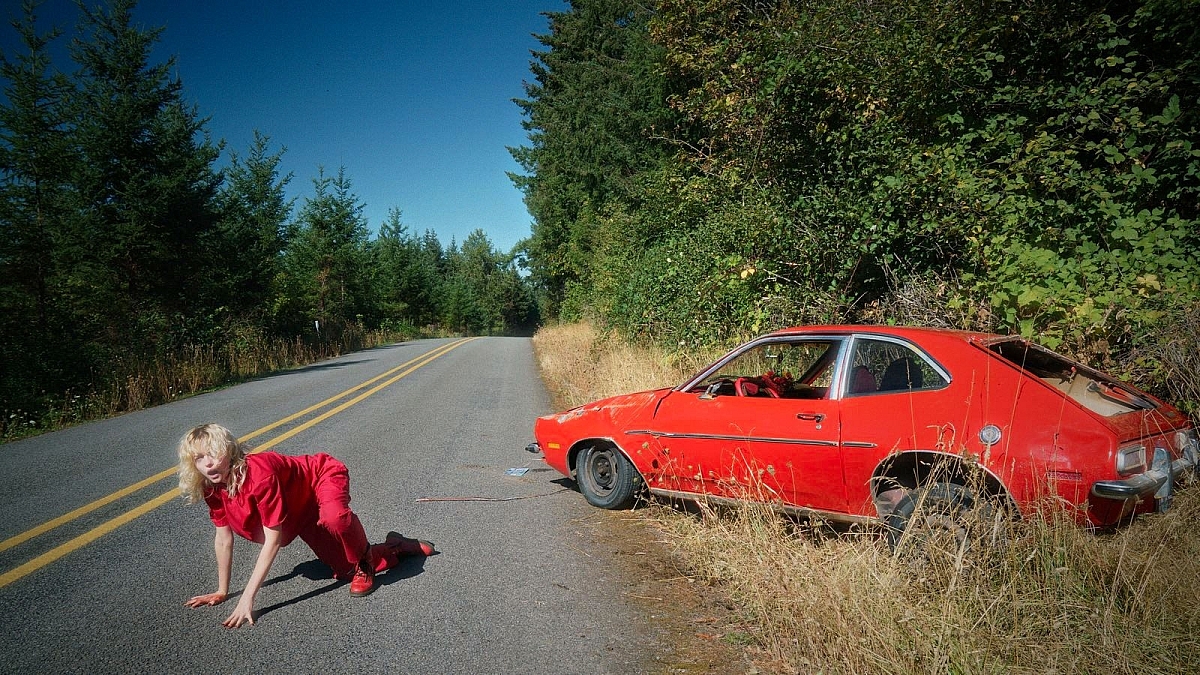
Willa Fitzgerald (The Lady) in "Strange Darling." © Miramax. All rights reserved.
Written and directed by JT Mollner and shot on KODAK 35mm by cinematographer Giovanni Ribisi, Strange Darling examines the complex nature of human connection and relationships. Told in six non-linear chapters, The Lady (Willa Fitzgerald) and The Demon (Kyle Gallner), our protagonist and antagonist apparent, are revealed through events surrounding a twisted one-night stand.
The film opens with a bang, in the middle of a chase scene in Chapter 3. As color slowly emerges from black and white images, we're informed a serial killer is on the loose. The story is driven as much by character as by expectation. With deft use of tension and twists, the film builds anticipation and unrest with each chapter. Mollner's direction and Ribisi's cinematography conspire to lead you down a road you think you recognize, only to shift and surprise.
From the atypical storyline to its deliberate use of color, Strange Darling is "about the exceptions in human behavior, not the rules, to make things more interesting and unpredictable. It's an exercise in playing with assumptions while keeping the characters grounded somehow," Mollner describes. "The narrative goal was always for it to be a ride and for it to continuously subvert expectations."
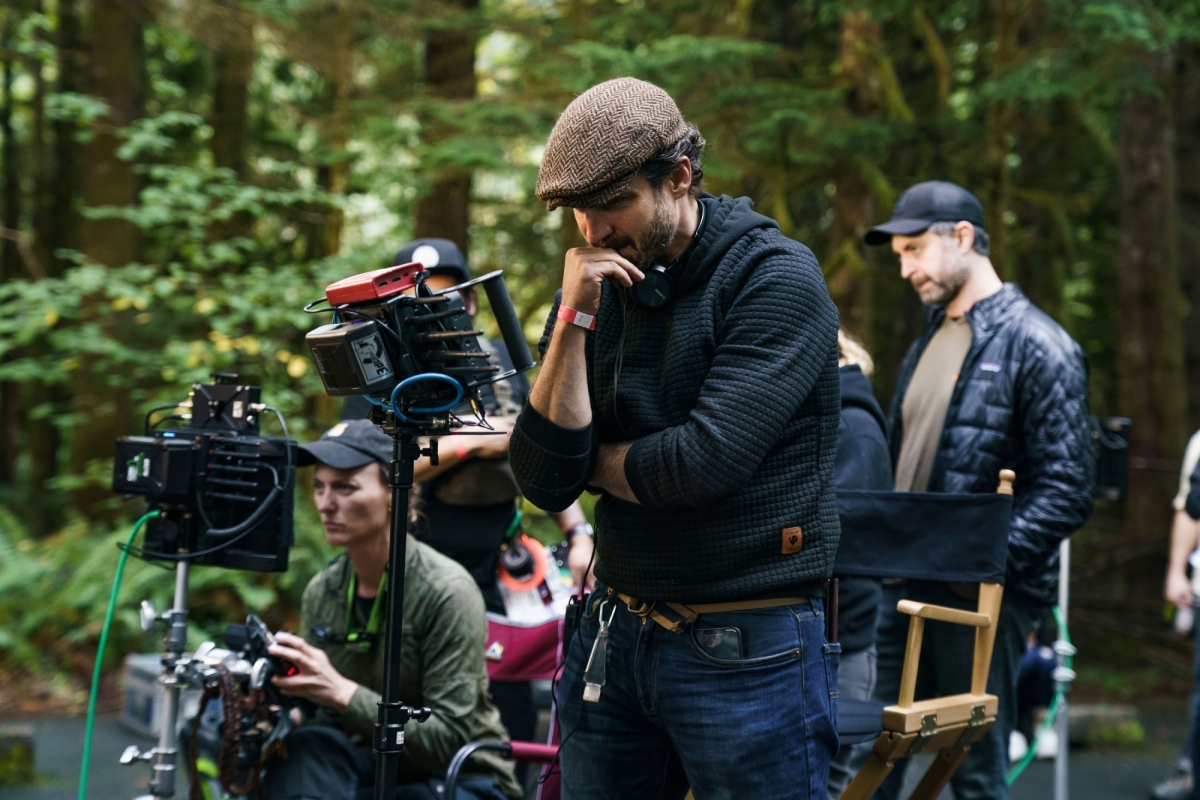
Director JT Mollner watching the story unfold on location for "Strange Darling." © Miramax. All rights reserved.
No stranger to a film set, this is Ribisi's first feature film as Director of Photography and writer-director Mollner's second feature. Subverting expectations and assumptions of their own careers, the long road to making Strange Darling has been fraught with its own surprises and challenges, including an extended prep and longer than anticipated post-production. Nevertheless, the unyielding vision shared between director and DP has kept it fresh and engrossing for viewers, and the film continues to capture the attention of audiences and critics alike after its nomination for Cinematographer's Debuts Competition at Camerimage last year.
Having met through a mutual friend and bonding over their love of cinema and analog film, Mollner and Ribisi found inspiration in their shared taste in filmmakers, defining the visual approach to Strange Darling while also prioritizing their own unique look. With a Panavision B-Series look, Ribisi leaned toward British films from the 1960s and '70s from filmmakers such as Freddie Francis, David Watkin, Douglas Slocombe, and Joseph Losey, citing The Servant in particular.
"In the end, it was more about trying something different and moving away from a homogenized style of a certain zeitgeist," Mollner said. He looked towards films like The Red Shoes, Cries and Whispers, The Devils, Dead Ringers, and Blue Velvet to help identify an approach to control color. "Our entire mission statement was 'the blood on the flower bed.' We wanted to take these various influences and infuse our own specific taste…we were coming up with our own look. This was going to look like a movie that was shot by Ribisi and directed by Mollner."
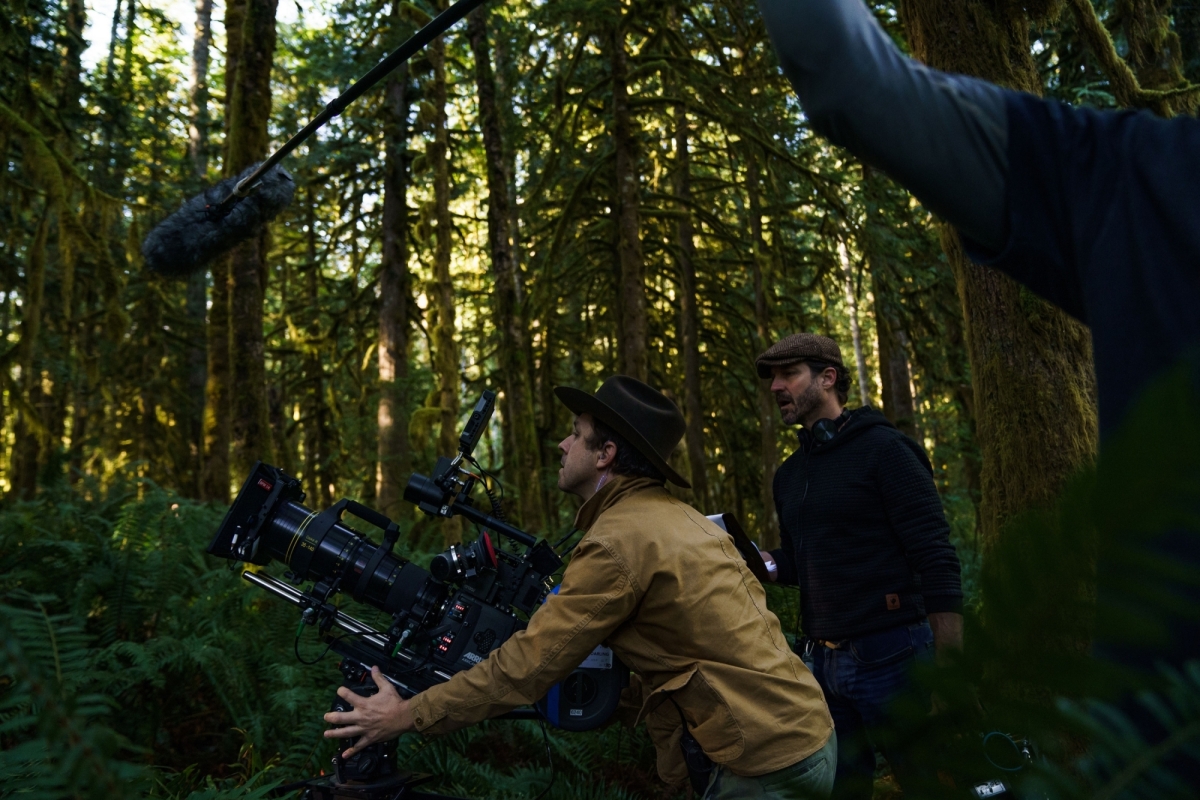
Cinematographer Giovanni Ribisi and Director JT Mollner focusing the frame on location. © Miramax. All rights reserved.
Ribisi explains, "The general concept was blood on the flower bed, as JT said, but also this fairy tale idea. We had talked about having these two characters come together who were experiencing isolation in their lives. They were alone. He's not connecting with his wife. She's her own person. One of the ideas was to shoot them and light them as if they were in a black hole. They're in this black truck. Then they're in the dark together and, in that space, they connect. Then when they get inside the hotel room, there's jarring warmth, color and skin tones."
He continues, "The camera work was challenging. [The scene's] about the dynamic relationship between these two actors and they did so well. It is about the context as well for me and where it happens and when it happens. It's really brilliant the way it's edited and set up and written. We wanted to take the engine compartment out [of the truck] with a chainsaw…so we could have wide spatial frames of these people with this beautiful blue light on them. Ultimately, we found something that I think got out of the way of them more. I love something that feels like French overs; sort of shot from behind, letting the sign illuminate them in their silhouettes."
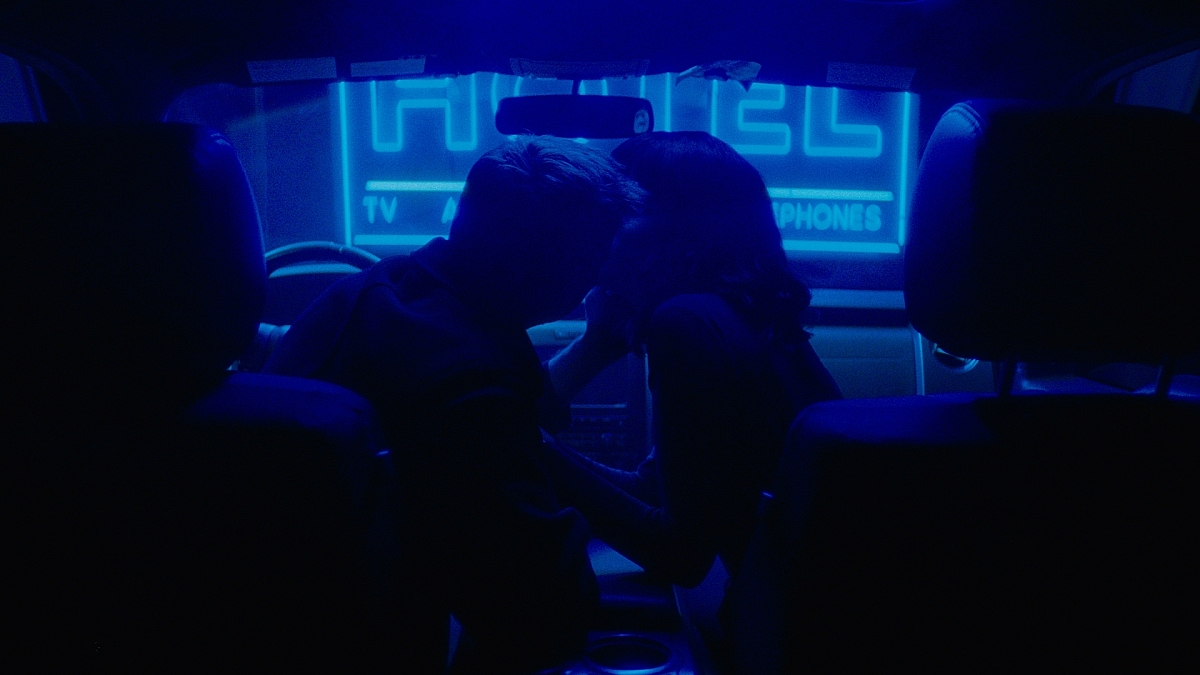
The Demon (Kyle Gallner) and The Lady (Willa Fitzgerald) embrace in front of the Blue Angel sign in "Strange Darling," directed by JT Mollner. © Miramax. All rights reserved.
A distinct facet of the look of the film, of course, is the use of KODAK VISION3 50D, 250D and 500T film stocks. Captured using Arricam LT, Arricam ST, Arriflex 235 & 435 and lensed with Atlas Orion and Cooke Anamorphic lenses, cinematographer Ribisi shared that shooting on film was never a question; it was the only choice for Strange Darling. Ribisi acknowledged a noticeable shift in the industry where producers are now embracing using film over digital, noting it doesn't affect cost as is sometimes argued. He also elaborated how shooting on film shaped the overall experience of the production: "When you're in the extremity of making a movie with a finite production schedule, the natural tendency is to default to cliché when you're not prepared.
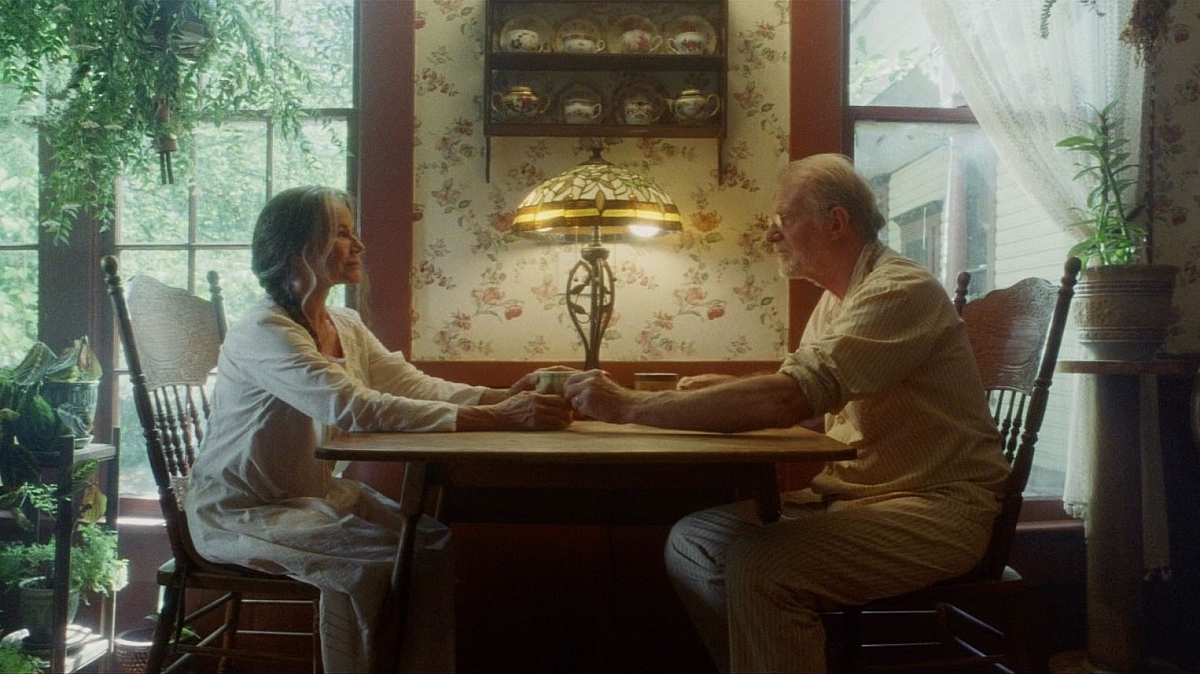
Barbara Hershey (Genevieve) and Ed Begley Jr (Frederick) in "Strange Darling." © Miramax. All rights reserved.
"I think shooting on film is part and parcel of going in ready to make a movie and showing up to do something that's purposeful as opposed to something based on a political process or inconvenience."
Mollner added that from a directorial perspective, "[Shooting on film] creates limitations that end up being better for the process. I think it creates an environment where I have to be disciplined and prepare and rise to the occasion, or else it's not going to work. It raises the bar for everybody on set because when people hear film rolling, when they can smell it, when they see the cameras, when they know it's there, it creates a reverence and it places an importance on the process that doesn't always happen when you're just shooting and shooting on a digital camera."